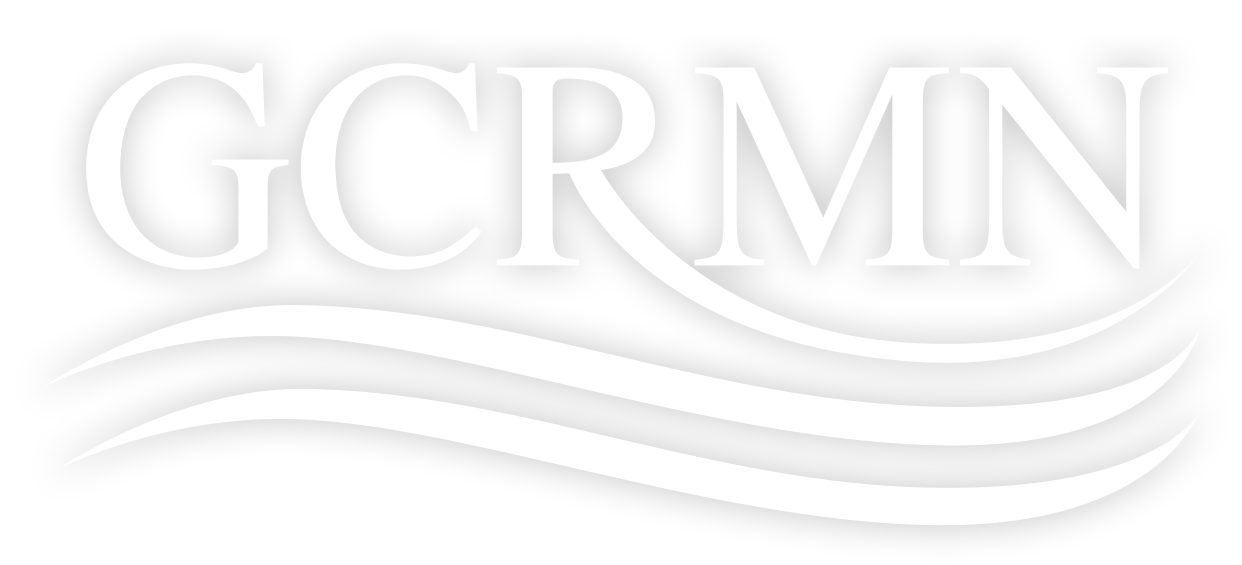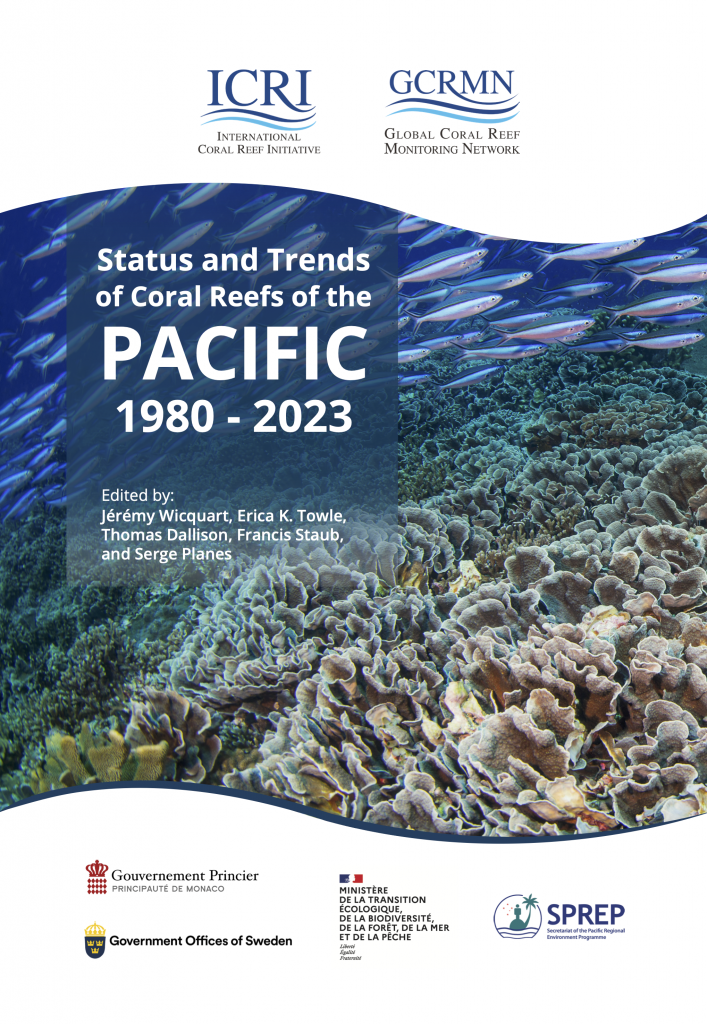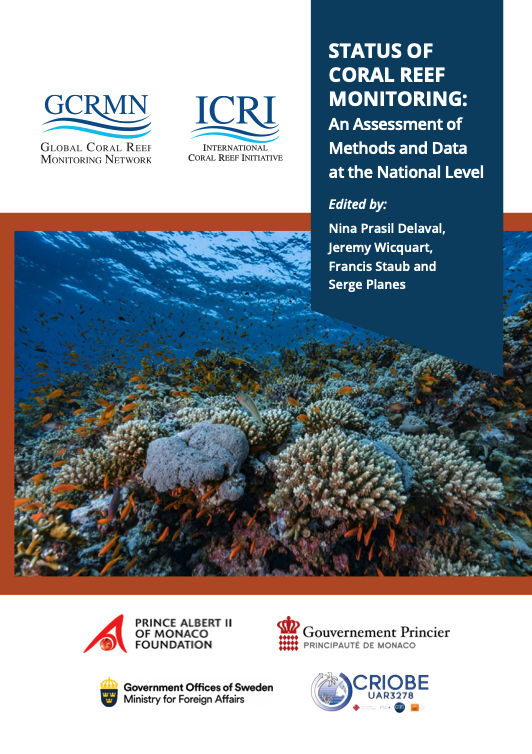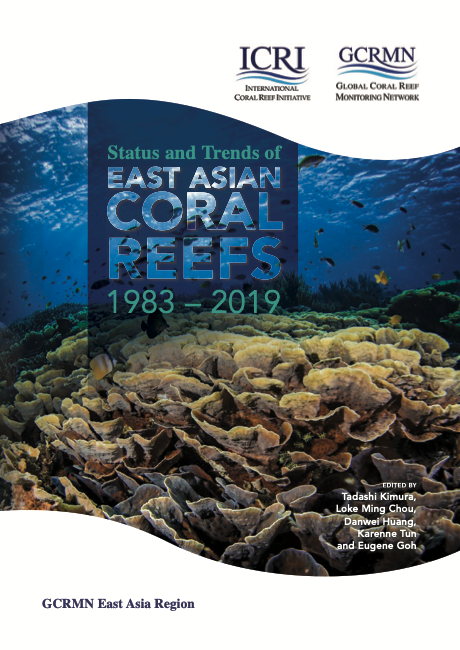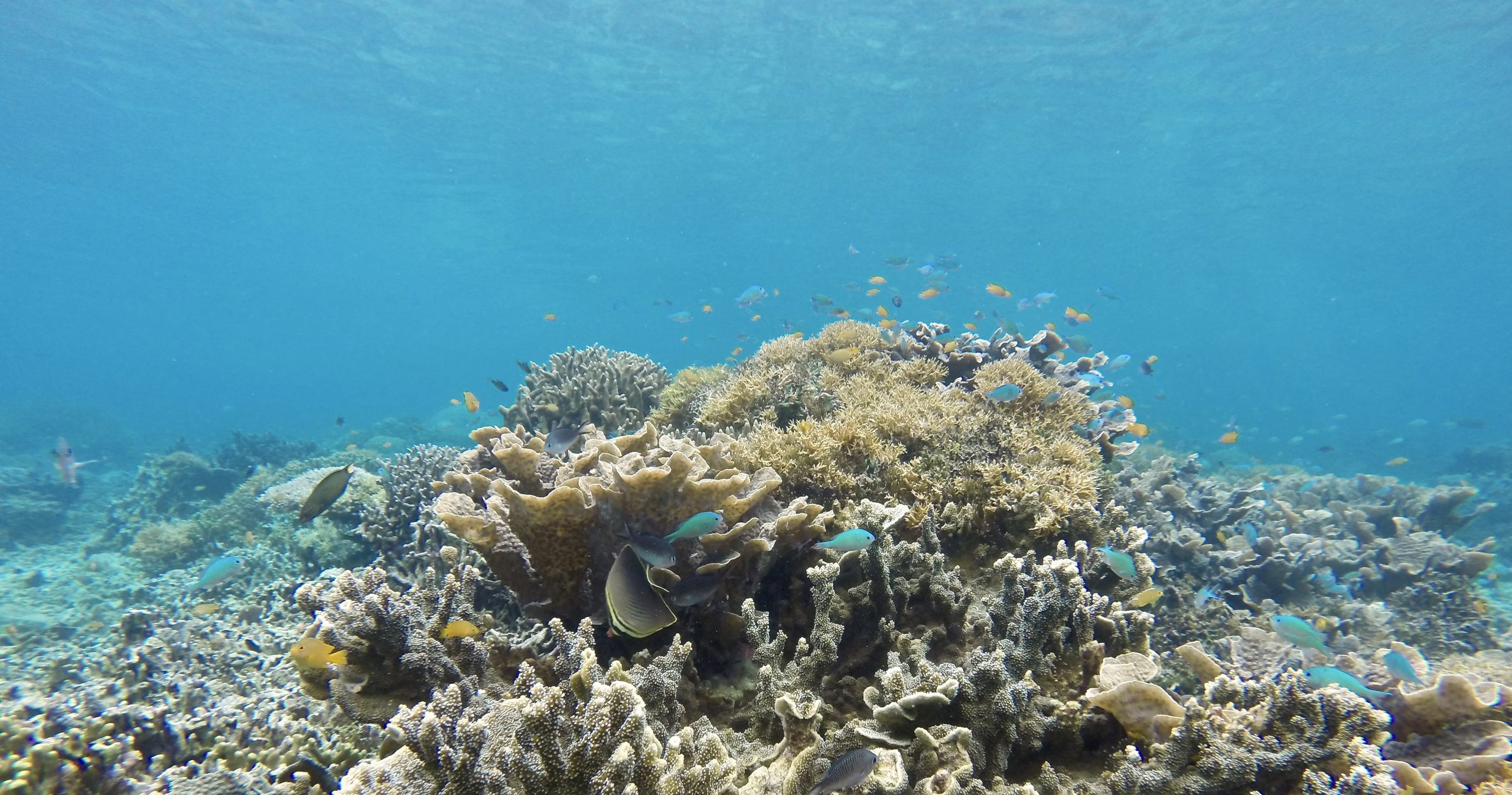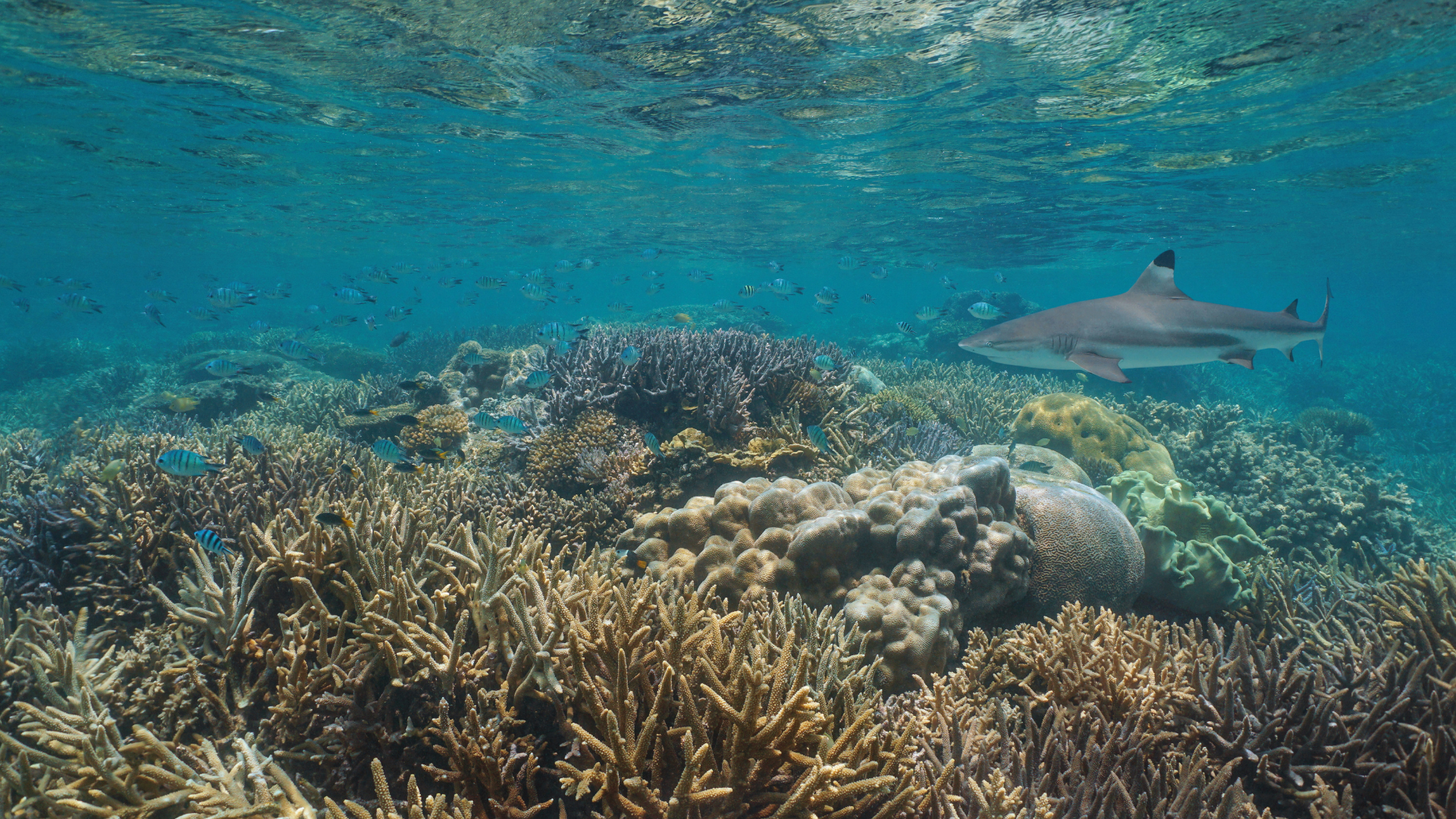Since its establishment in 1995, as an operational network of the International Coral Reef Initiative (ICRI), the Global Coral Reef Monitoring Network (GCRMN) has played a vital role in protecting coral reefs through the provision of critical information on the status and trends of coral reefs, fostering collaboration, and supporting effective conservation and management practices.
As 2025 marks 30 years of the GCRMN, we present a brief history of how the GCRMN has evolved from a loosely coordinated initiative to a network central to global coral reef conservation efforts, to celebrate this significant milestone.
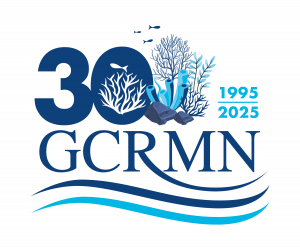
1970s: How it all began
Two heroes of coral reef monitoring, Edgardo Gomez and Angel Alcala, observed rapid declines in Philippine coral reefs in the late 1970s. Their findings led to some of the first Marine Protected Areas (MPA) over coral reefs in the world and demonstrated how scientific monitoring could inform governments and the wider public on the need for conservation action.
Voices raising concerns about the future of coral reefs became louder in the 1990s. Local and regional conservation initiatives started to emerge, identifying the need for coordinated coral reef monitoring to provide reliable information about the status and trends of coral reefs. In 1991, CARICOMP (Caribbean Coastal Marine Productivity) started monitoring training in Jamaica, which was the start of Caribbean-wide collaboration for monitoring reefs, later growing into the GCRMN Caribbean Region.
1990s: Establishing the GCRMN
In the margins of the First UN Conference on the Sustainable Development of Small Island Developing States in Barbados 1994, the idea emerged of establishing an informal group focused on coral reefs. The USA suggested a US Coral Reef Initiative or a joint US-Japan initiative. The Australian Ambassador for the Environment, Penny Wensley, asked: “why not make it bigger?” Responding to her argument that it should be international, involving all regions and oceans, island states, developed and developing countries, eight countries (Australia, France, Jamaica, Japan, Philippines, Sweden, UK, US), established the International Coral Reef Initiative (ICRI), launched that same year in Nassau at the First Conference of the Parties to the Convention on Biological Diversity (CBD). Angel Alcala and Penny Wensley convened the first ICRI meeting in the Philippines in 1995, where ‘research and monitoring’ was agreed to be a key ICRI focus. With initial funding from the US Department of State, the GCRMN was established as an operational network of ICRI in 1995, acknowledging the need for evidence-based decision making to protect coral reefs.
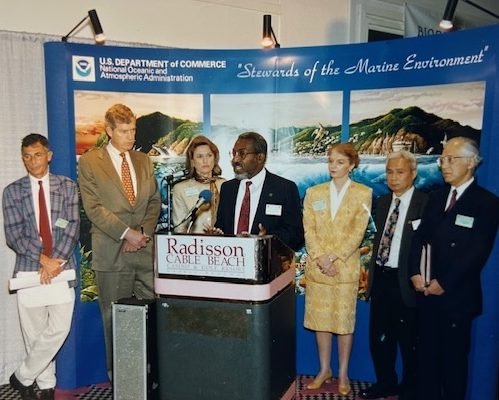
Launch of ICRI at the First Conference of the Parties of the Biodiversity Convention in 1994 in Nassau. From left: Deputy Director of the Nature Division, Ministry of Environment Alain Megret (France), Senator Tim Wirth (USA), Ambassador for the Environment Lyn Holowesko (Bahamas), Minister Easton Douglas (Jamaica), Ambassador for the Environment Penny Wensley (Australia), Minister Angel Alcala (Philippines), Ambassador to the UN-NY Hisashi Owada (Japan).
In 1996, the Intergovernmental Oceanographic Commission of UNESCO selected Clive Wilkinson from the Australian Institute of Marine Science (AIMS) as the inaugural GCRMN Coordinator, and AIMS became a long-term host and supporter of the GCRMN.
Clive Wilkinson and Bernard Salvat convened a session at the 1996 International Coral Reef Symposium (ICRS) on the status of coral reefs, with reports from 11 regions around the world. The following year, various governments and international agencies supported regional meetings to scope the GCRMN and to facilitate monitoring to start assembling the much-needed long-term datasets. This was supported by the AIMS Survey Manual for Tropical Marine Resources – still widely utilised today. The now well-known ten GCRMN regional nodes were pragmatically designated on regional affinity, funding and coordination opportunities.
The first major output from the network, the Status of Coral Reefs of the World: 1998 report, was launched at ICRI’s first International Tropical Marine Ecosystem Management Symposium in Australia. The report was a compilation of the 11 papers presented at the 1996 ICRS and highlighted the global threats to coral reef health for the first time. The release coincided with the first recorded global coral bleaching event in 1997-98, stressing the need for stronger monitoring and early warning systems for coral reefs and their managers.
2000s: The network in full swing
During this decade, the GCRMN expanded its operations through the regional nodes, allowing it to tailor monitoring and capacity-building efforts to local and regional contexts. These regional partnerships helped improve data consistency, capacity-building, and community engagement, supported by the growing membership of ICRI. Notable regional outputs include the Status of Coral Reefs in East Asian Seas Region: 2004 (updated in 2010) and Status of Coral Reefs in Tsunami Affected Countries: 2005 reports.
The network also released regular and impactful Status of Coral Reefs of the World reports, in 2000, 2002, 2004 and 2008, recording the long-lasting negative impacts of the 1997-98 coral bleaching event and highlighting the growing global and local threats to coral reefs.
The network also recognised the need to understand the human dimensions in the world’s coral reef areas. The first Socioeconomic Manual for Coral Reef Management was published in 2000, followed by the creation of the Global Socioeconomic Monitoring Initiative for Coastal Management (SocMon) in 2002, as the socioeconomic monitoring arm of the GCRMN.
2010s: Interlude and revitalisation
After more than a decade as GCRMN Coordinator, Clive Wilkinson handed the baton to the IUCN, with Carl Lundin chairing the GCRMN Steering Committee. During this period, the focus of the GCRMN shifted to the production of regional reports, informing coral management in their regions with regular, high quality status reports. For example, the Status of Coral Reefs in East Asian Seas Region in 2010, 2014, and 2018, the Status of Coral Reefs of the Pacific and Outlook in 2011 and 2018, the Status and Trends of Caribbean Coral Reefs 1970-2012 and the Status of Coral Reefs in the Western Indian Ocean 2017.
In 2016, the UN Environment Assembly (UNEA) Resolution 2/12 Sustainable Coral Reef Management was adopted resulting in the reinvigoration of the GCRMN through a call, among other resolution actions, to support regional coral reef assessments and the preparation of a global report on coral reef status and trends through the GCRMN. A revitalisation effort led by ICRI, UNEP, and other partners restructured GCRMN’s governance to improve coordination, transparency, and scientific rigor, formalised in the Implementation and Governance Plan (IGP), which became operational in January 2019 and is still current.
From 2018, with The Honourable Penny Wensley AC as its Council Chairman, AIMS resumed its role as co-ordinator and host of the GCRMN, with David Souter as the Global Coordinator.
Obviously, a span of three decades is tiny in comparison with the rich and varied history that coral reefs have enjoyed over hundreds of millions of years, but in the story of global action to conserve and sustain these ancient, vital ecosystems, it is important to record and draw inspiration from what the GCRMN has achieved.
From modest beginnings, this informal collaborative effort, engaging scientists, policy makers and conservationists to monitor and assess the status of coral reefs world-wide, has grown to become a genuinely global movement and a critical tool in the ongoing effort to save the world’s coral reefs.
This growth has been achieved through the commitment of many hundreds of individuals, united by a shared passion, to protect and preserve these beautiful natural wonders for future generations. We may take the opportunity of this anniversary year to recognize their achievements, but as the challenges confronting coral reefs deepen, it should inspire a resolve to maintain and strengthen support for the GCRMN and ICRI as crucial elements in building international cooperation to meet these challenges.”


Launch of the Status of Coral Reefs of the World: 2008 report at the Australian Embassy in Washington DC. At the lectern: Dr Brian Baird (Congressman), from left: Christine Dawson (US Dept. of State), Christy Loper (SocMon Coordinator, NOAA), Kacky Andrews (NOAA) and Clive Wilkinson (AIMS, GCRMN Coordinator).
2020s: The network is alive and well
In 2021, GCRMN released its most comprehensive report to date, the Status of Coral Reefs of the World: 2020, which, for the first time, was based on a quantitative data analysis of a global dataset from 12,000+ sites in 73 countries. It showed a 14% reduction of live coral on the world’s coral reefs between 2009 and 2018 — an area larger than the Great Barrier Reef, and a wake-up call for global reef conservation. In 2022, Britta Schaffelke became the next GCRMN Global Coordinator and in 2025 passed this role to Manuel Gonzalez Rivero.
The GCRMN now plays a role in tracking progress toward Sustainable Development Goal 14 (‘Life Below Water’) and the data collected by the member regions are the foundation for assessments that contribute to the headline indicators of the monitoring framework of the Convention on Biological Diversity’s Kunming-Montreal Global Biodiversity Framework (GBF). And it maintains this momentum with the on-going development of the next global report – the Status of Coral Reefs of the World: 2025 – to be released in 2026, and the development, and release, of multiple regional reports including the Status and Trends of Coral Reefs of the Pacific: 1980 – 2023, released at the occasion of the UN’s Third Ocean Conference, Nice (France) in June 2025.
As the network continues to share knowledge and expertise, it is expanding global collaborations among scientists, conservationists, and policymakers. Especially through its Data Taskforce and regional initiatives, the network continues evolving, integrating new data science approaches and technologies. This will serve us well over the next decades.

Authors: Britta Schaffelke & Clive Wilkinson, past-GCRMN Coordinators
